Paramod 2011 Student Examples
by Tuğrul Yazar | February 22, 2012 14:59
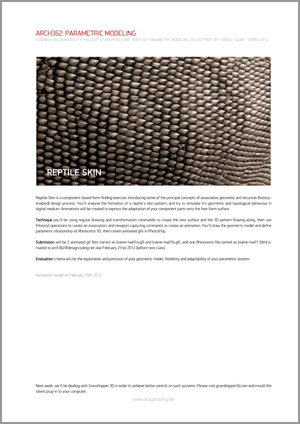 [1]
[1]Here are some of the results of first assignment, “Reptile Skin”. Generally, we couldn’t manage to develop innovative solutions to the problem. But this became a good starting point for understanding the method of “skins of components” in contemporary digital design. Before going into any control over the flow of data, it’s hard to maintain associative geometries. We usually feel stuck within the capabilities of the single commands or procedures. That’s why, digital design deals with “processes” much more intensively than the formal outputs and develop tools and methods to control “the algorithmic process”, rather than to create nice geometries. Next week we’ll experiment on this subject by getting more into “the process”.
First of the two animations show the geometric design and associative manipulation of surface components; and second animation shows the continuous adaptation onto a surface.
Yağız Özkan[2]‘s work:
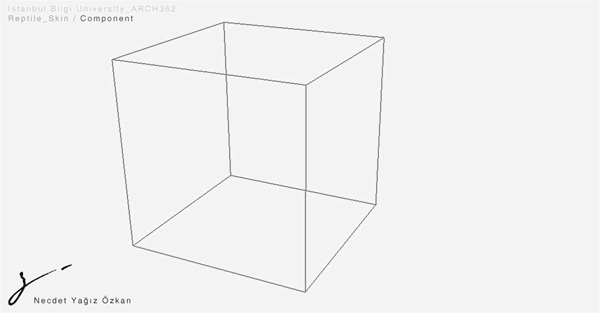
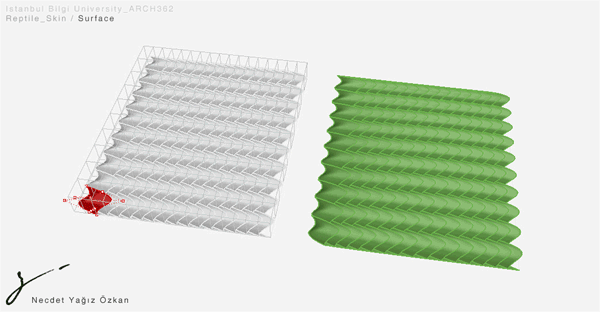
Yunus Emre Dokumacıoğlu’s work:
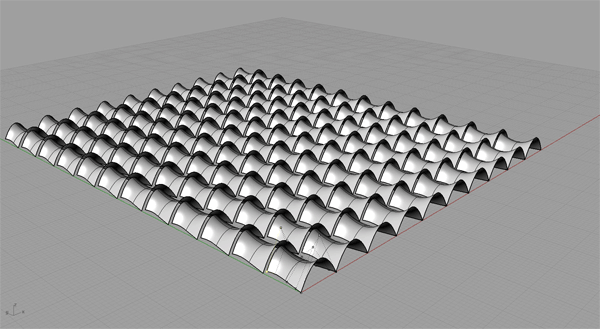
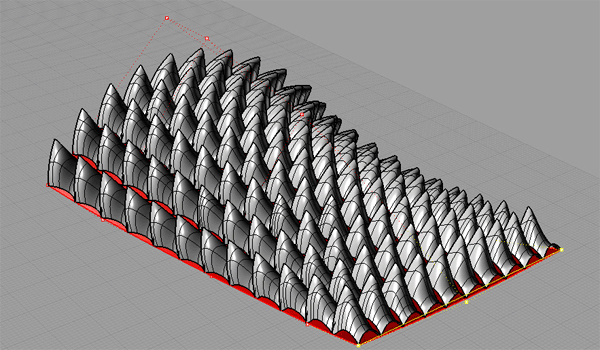
Yeşim Yıkılmaz has experienced various formations;
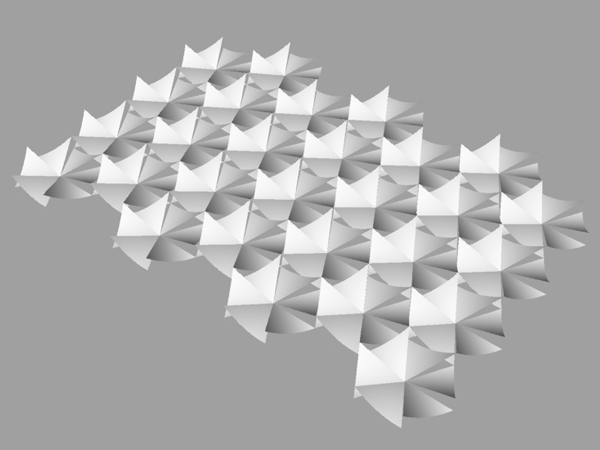
- [Image]: https://www.designcoding.net/decoder/wp-content/uploads/2012/02/REPSKIN.pdf
- Yağız Özkan: http://www.yagizozkan.com
Source URL: https://www.designcoding.net/week-01-student-examples/